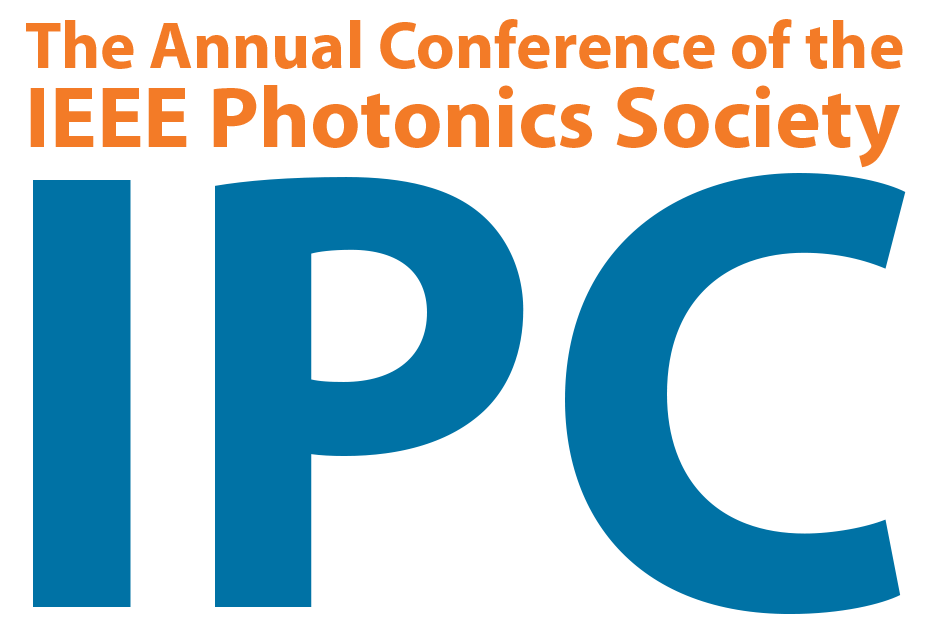Post-Deadline Papers
PLEASE JOIN US FOR THE 2020 IEEE PHOTONICS CONFERENCE
CLOSING CEREMONY
Thursday, 1 October 3:30 PM – 5:00 PM EDT
SESSION CHAIR: Christina Lim, The University of Melbourne, Australia
BEST STUDENT PAPER AWARDS WILL BE ANNOUNCED
THE FOLLOWING POST DEADLINE PAPERS WILL BE PRESENTED
PD1 – Tunable Topological Charge Vortex Microlaser with Ultrafast Controllability
Z. Zhang, X. Qiao, B. Midya, K. Liu, H. Zhao, University of Pennsylvania, USA, J. Sun, Duke University, USA, T. Wu, University of Pennsylvania, USA, D. Pires, Duke University, USA, W. Liu, Z. Gao, R. Agarwal, University of Pennsylvania, USA, J. Jornet, Northeastern University, USA, S. Longghi, Politecnico di Milano and Istituto di Fotonica e Nanotecnologie del Consiglio Nazionale delle Ricerche, Italy, N. Litchinitser, Duke University, USA and L. Feng, University of Pennsylvania, USA
By harnessing the synergy of total momentum conservation, spin-orbit interaction, optical non-Hermitian symmetry breaking and transient optical gain dynamics, we demonstrate an (fractional) OAM-tunable vortex microlaser, providing ultrafast reconfigurable chiral light emission with desired topological charge at a single telecom wavelength.
PD2 – A Heterogeneous O-Band Quantum-Dot DFB Laser with Integrated MOS Capacitive Control
D. Liang, A. Descos, G. Kurczveil, C. Zhang, Z. Huang and R. Beausoleil, Hewlett Packard Enterprise, USA
We demonstrate a heterogeneous 1310 nm QD DFB laser with record efficiency and excellent single-mode property. The observed wavelength tuning enabled by an integrated MOS capacitor for the first time is promising for high-speed QD laser direct modulation.
PD3 – Longitudinal Current Crowding as Power Limit in High Power 975 nm Diode Lasers
R. Swertfeger, S. Patra, B. Deri, M. Boisselle, D. Pope, Lawrence Livermore National Laboratory, USA, P. Leisher, Freedom Photonics, USA, S. Arslan, J. Fricke, A. Ginolas, C. Stölmacker, H. Wenzel and P. Crump Ferdinand-Braun-Institut, Germany
Experiment and simulation of high power diode lasers reveals a longitudinally-varying current density profile, due to spatial hole-burning. Current crowding at the front facet increases with cavity length and bias, and limits the achievable power.
PD4 – Passively Mode-locked Bragg Lasers with ~ 200 fs Near Transform-limited Pulses at 64 GHz
B. Janjua, M. Iu, Z. Yan, P. Charles, E. Chen and A. Helmy, University Of Toronto, Canada
We demonstrate a semiconductor passively mode-locked Bragg waveguide laser based on a two quantum well active region. The lasers exhibit pulse widths down to 211 fs at 64 GHz, which is a new record, especially for emission around 785 nm
PD5 – A Bell-state Analyzer for Photonic Frequency
N. Lingaraju, H. Lu, D. Leaird, Purdue University, USA, S. Estrella, Freedom Photonics, USA, J. Lukens, Oak Ridge National Laboratory, USA and A. Weiner, Purdue University, USA
We demonstrate the first Bell-state analyzer for frequency-bin entangled photons and unambiguously distinguish two of four Bell states with fidelities over 92%. This is an important step toward the vision of a quantum internet that is compatible with both heterogeneous nodes and dense spectral multiplexing.
PD6 – Monolithic Plasmonic Transceiver Architecture
C. Lin, P. Chang, Y. Su and A. Helmy, University Of Toronto, USA
We report an athermal, monolithic, and amorphous-based plasmonic waveguide architecture that is simultaneously optimized for multiple functionalities each with record performance, demonstrating experimental micro-ring Purcell factor approaching 10<sup>4</sup>, 10-dB amplitude modulation with <1 dB insertion loss and fJ-level energy, and photodetection sensitivity of −54 dBm.
